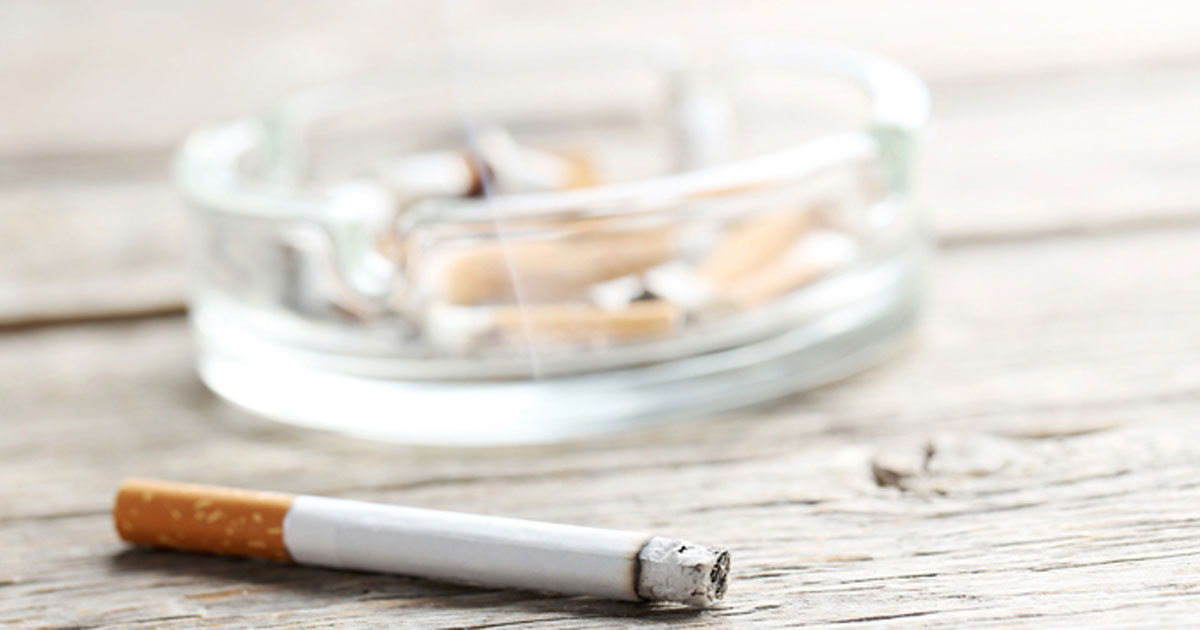Smoking lowers TSH among euthyroid adults
Japanese euthyroid adults who report smoking have a lower thyroid-stimulating hormone level compared with nonsmokers independent of age, sex, race and iodine status, according to findings published in the Journal of the Endocrine Society.
“In the present study, we found that smoking appeared to reduce serum TSH levels in a cross-sectional and longitudinal study for 1 year,” Masanobu Yamada, MD, PhD, a researcher in the department of medicine and molecular science with Gunma University Graduate School of Medicine, Japan, and colleagues wrote. “This is the first study to provide details on the relationship between smoking and serum TSH levels in an iodine-rich country.”
Yamada and colleagues analyzed data from 12,250 euthyroid adults who underwent annual health exams at Takasaki Hidaka Hospital between 2003 and 2015 (mean age, 50 years; 4,944 women). Participants self-reported medical history and medications, as well as smoking habits (asked if currently smoke or do not smoke), at baseline and again at 1 year. A smoker was defined as someone who smoked at least one cigarette per day. Participants provided fasting blood samples at both visits. Subclinical hypothyroidism was defined as a serum free thyroxine level within the reference range, but a serum TSH level greater than 4 mU/L. Subclinical hyperthyroidism was defined as a normal free T4 level, but a TSH level lower than 0.4 mU/L.
The researchers found that serum TSH levels and the prevalence of positivity for thyroid peroxidase (TPO) antibody status increased with age among euthyroid adults.

Additionally, mean serum TSH levels were lower among smokers vs. nonsmokers, apart from women aged at least 50 years. Among men aged 31 to 40 years, median 97.5th percentiles of TSH levels were 1.2 mU/L and 2.9 mU/L, respectively, for smokers, and 1.4 mU/L and 3.9 mU/L, respectively, for nonsmokers (P < .01). Among men aged 61 to 70 years, mean and median TSH levels were 1.4 mU/L and 4.3 mU/L, respectively, for smokers and 1.8 mU/L and 6.2 mU/L, respectively, for nonsmokers (P < .01).
Serum TSH levels were higher among adults who were TPO antibody positive vs. adults who were TPO antibody negative, with results persisting in analyses stratified by age and sex; however, smoking did not influence free T4 levels or TPO antibody positivity.
Researchers also examined serum TSH levels among participants who reported smoking at baseline and not smoking at 1 year (n = 107), as well as participants who reported not smoking at baseline and smoking at 1 year (n = 51).
At 1 year after starting smoking, serum TSH levels decreased after adjustment for age (P < .05); however, there was no change in serum TSH observed among participants who stopped smoking at 1 year.
“Since smoking appears to lower serum TSH levels in Japanese subjects with euthyroxinemia, their smoking status warrants careful consideration when evaluating subclinical thyroid function,” the researchers wrote.
The researchers noted that information on smoking status was obtained by self-report, and they did not evaluate the amount of smoking; therefore, any effect of moderate vs. heavy smoking on TSH levels remains unclear. – by Regina Schaffer
Disclosures: The authors report no relevant financial disclosures.
